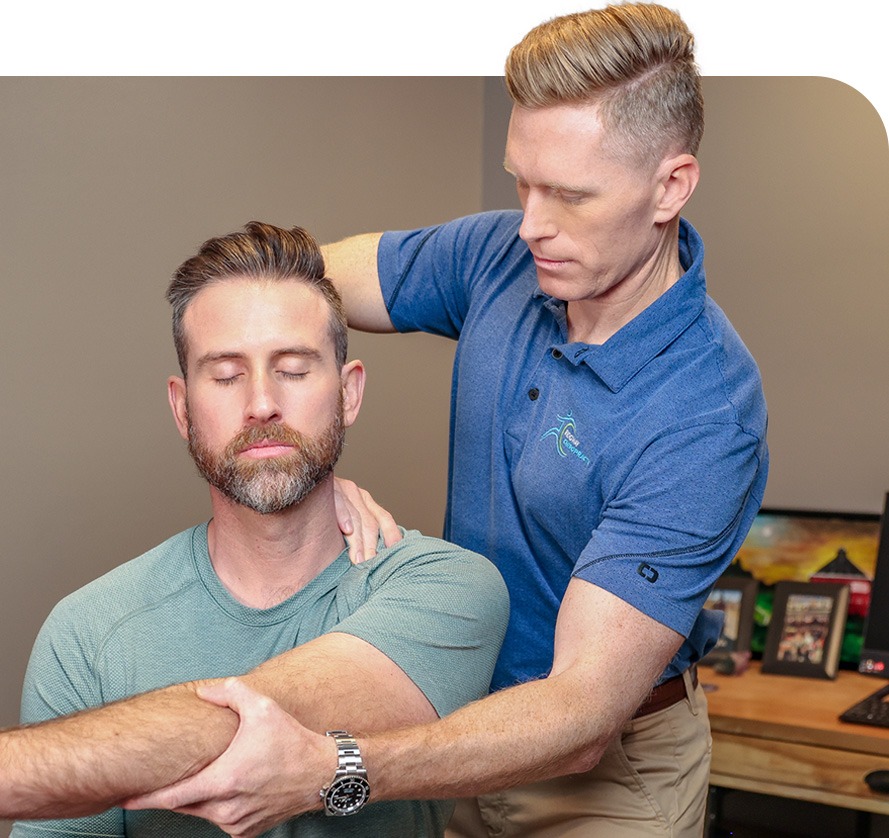Do you ever experience pain in the heel or the bottom of the foot after prolonged periods of standing, walking, or running? Do you ever experience foot pain when first getting out of bed in the morning?
If so, you are not alone and may be suffering from the very common and very debilitating condition known as plantar fasciitis. Unfortunately, this condition often causes months to years of discomfort and when not addressed properly, can lead to a lifetime of frustration. You may have tried one or more of the traditional treatment methods before with little relief. Ice, heat, NSAIDS, electrical muscle stimulation (e-stim), and ultrasound (US) have been regularly prescribed for the treatment of plantar fasciitis yet merely focus on the symptoms rather than the underlying cause. This achieves the very short-term goal of temporary pain relief but does nothing to eradicate the cause. Other treatment options like stretching and exercise are essential components of the recovery process but again fail to address the underlying issue. What is the issue you ask? The answer is scar tissue.
So how does this scar tissue get there in the first place? To answer this, we must examine the anatomy of the foot and the role of the plantar fascia. The foot is an intricate network of muscles and ligaments, which support and stabilize the 26 bones and 33 joints of the foot. The plantar fascia is a dense connective tissue that runs from the heel to the toes and helps support the arch and stabilize the joints of the foot. Together, the muscles and plantar fascia work together to allow the foot and ankle to work properly. However, any breakdown or compromise in the integrity of the support system will result in very painful consequences.
Throughout the day, we put a tremendous amount of stress on our feet. Running, walking, and standing stress the muscles and fascia of the foot. Overtime, the tissues become fatigued and more susceptible to micro-trauma, or microscopic tears, that develop as a result of overuse. The body responds to this injury by laying down scar tissue. Over time, this scar tissue builds up leaving the muscles short, tight, weak, and unable to properly support the foot and ankle. As the muscles become tight, the tension increases at the attachment on the heel and is often the first symptom of plantar fasciitis. As you can see, pain is typically the last stage of dysfunction. What started out as a mild ache or tight muscle becomes a debilitating and frustrating condition over weeks, months, and years of repetitive insult.
So what do we do about the scar tissue that has left the bottom of our feet feeling like a bed of hot coals? Fortunately, a new technique known as Active Release Technique® (ART®) has proven to be very effective at resolving plantar fascia pain. Active Release Technique® is specifically designed to treat short, tight, and damaged muscles, tendons, ligaments, nerves, and fascia by targeting scar tissue. The ability to quickly and effectively treat scar tissue separates ART® from the rest of the available treatment options, restoring proper muscle movement, length, strength, and blood flow. The end result is increased functionality, improved range of motion, better stability, and most importantly, the elimination of pain.
Call Ridgway Chiropractic to see if ART® can help with your foot pain. For more information on ART®, check out activerelease.com
-Dr. Caleb Ridgway DC, ART

